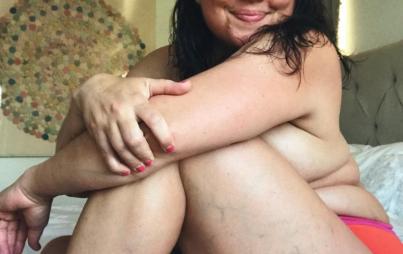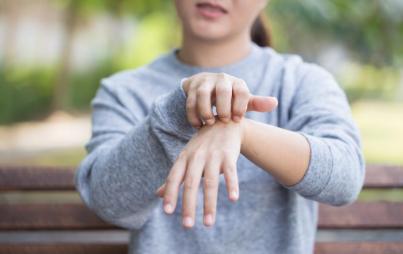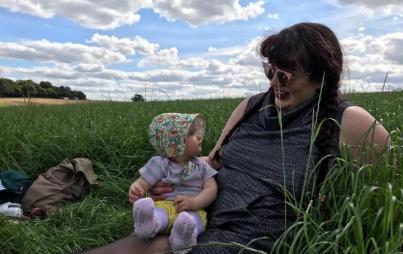
"Dancing is one of the most amazing things a young girl can grow up doing."
... we live in a world where 90% of female teenagers are dieting. And what these teenagers are talking about in the bathroom mirror with their girlfriends is how big their butt is, and how flabby their belly is, and how thick their thighs are.
“What's this?!” I ask as I grab my upper thigh.
“Quadroooooo... cepsis!” someone shouts excitedly.
“Ohhh! So close! Everyone say quad...ri...cep.”
“Quad...ri...cep.”
“Great ladies. How about we nickname it 'quad' for short?”
“Quad!”
Yes, that's right. My students are seven, and I'm teaching them what a quadricep is. And a hamstring. And the glutes. And the abdominals.
It's an experimental strategy I started using this year in their ballet and jazz classes. These seven- and eight-year-olds are entering these beginning dance classes and learning to stretch for the first time without using imagery of butterflies and flamingos. And I have decided to take them from zero to 60 immediately.
Why?
Because they're little girls. And we live in a world where 90% of female teenagers are dieting.
And what these teenagers are talking about in the bathroom mirror with their girlfriends is how big their butt is, how flabby their belly is, and how thick their thighs are.
And obviously that makes most of us want to scream, and it makes us wish we could fix it, and it makes us wish everything, everything, was different.
So I've taken that angst and I've used it as fuel to brainstorm every possible way to fix the problem in the next generation before it starts. I'm a dance teacher, and I didn't grow up loving or appreciating my body; my instrument. I was told I had a pooch pouch. I was told we couldn't get two-piece costumes because of my belly. I was told that eating less would make me better for dancing. I was told other things too, and after much therapy, I've been able to face my hideous upbringing as a dancer and turn it into the catalyst for change as I teach the next generation how to tap, turn, and leap.
My newest experiment is this muscle game that I play halfway through class. I was never taught what my muscle groups were! I just knew how to do a split and kick my face and when something hurt, I was told to rest.
I can't help but wonder: What could be different if I start teaching my little girls what the muscles are under all those body parts that the magazines will be so quick to label as flawed in a few years when my girls start reading them?
Instead of calling it a poochy belly at age 14, what if my girls just know their torso as a group of muscles called the abdominals? Will the pubescent bumps and rolls that the media detests bother them as much as they grow older?
Instead of identifying their worth by the amount of cellulite on their thighs in their 20s, what if my girls know the muscle groups that make up their legs and can carry themselves proudly because they know what they could do with them when they were in dance class? Can I teach them that there's nothing wrong with a protruding booty because it means they've been using it to tap dance?
Can I teach them that their calf muscle will be strong as hell because they're walking around on their toes for hours on end, so that when they go to try on boots and they don't zip, they think of it as a testament of strength, not failure?
I'm not sure. I honestly don't know if it will work. But I don't see any reason I shouldn't try.
So far we're five weeks into the semester, and we just added our quads (oops, sorry, our “quadrocepsis”) to our vocabulary. We know our groin, our hamstring, our calf, our abdominals, and our glutes. We know how to stretch each one, and we know how strong they get as we plié at the barre each week.
What my students don't know is the scrutiny they might come under as they reach their adult years of dancing. And somehow, it's my job to protect them, but also prepare them at the same time. Having faced that scrutiny in New York City for a decade, I feel so overwhelmed sometimes that I'll never be able to change things for my students. But then I bring it right back to the barre, right back to that single plié, and take it one beat at a time.
I think, in a few weeks, we'll talk about the two most important body parts we need for dancing: our brain and our heart. Using both, to appreciate our instrument and admire all that it can do, is the most important piece of advice I can possibly give them.
I don't always know if I'm doing this whole body-positive dance thing right. It's like a real-life game of Operation, where I know if I don't use the right words to extract the moves from my students, I could be doing severe damage. But I believe that the awareness, and the dedication to figuring that game out, will guide me in the right direction for all of us. I do know that I use my brain and my heart when I'm in that studio, and I've decided that that's the most authentic way to teach dance.
It's a tricky business, this everything-I-say-and-do-makes-an-impact-on-the-younger-generation-around-me teaching thing, but dancing is one of the most amazing things a young girl can grow up doing, and for that reason, it's a game of Operation I'm willing to play.








